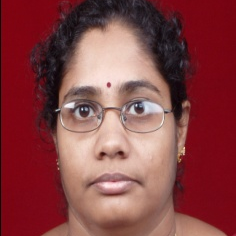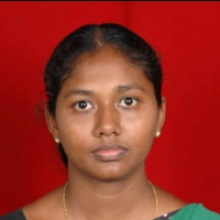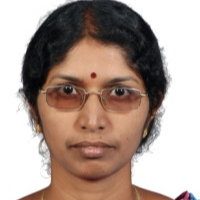International Journal of Computer Network and Information Security (IJCNIS)
IJCNIS Vol. 11, No. 2, 8 Feb. 2019
Cover page and Table of Contents: PDF (size: 693KB)
Performance Analysis of Convolution Code with Variable Constraint Length in Shallow Underwater Acoustic Communication
Full Text (PDF, 693KB), PP.13-20
Views: 0 Downloads: 0
Author(s)
Index Terms
Viterbi decoding, Hamming distance, Underwater Acoustic Communication Channel, Ray Tracing, Ambient Noise
Abstract
One of the most complex environment for the data transmission is the underwater channel. It suffers frequency selective deep fading with serious multi path time delay. The channel also has limited bandwidth. In this paper, the effect of Least Code Weight – Minimum Hamming Distance (LCW-MHD) polynomial code is studied using Viterbi Decoding Algorithm for the shallow Underwater Acoustic Communication (UAC) channel. Two different channels with the range of 100 and 1000 meters are considered for simulation purpose and the channel is designed using Ray Tracing algorithm. For data and image transmission in the channel, three different code rate of 1/2, 1/3 and 1/4 are considered and corresponding Bit Error Rate (BER) are evaluated. Result showed that the BER is least for the LCG-MHD polynomial code.
Cite This Paper
Krishnamoorthy Narasu Raghavan, Suriyakala C D, Ramadevi Rathinasabapathy, Marshiana Devaerakkam, Sujatha Kumaran, "Performance Analysis of Convolution Code with Variable Constraint Length in Shallow Underwater Acoustic Communication", International Journal of Computer Network and Information Security(IJCNIS), Vol.11, No.2, pp.13-20, 2019. DOI:10.5815/ijcnis.2019.02.02
Reference
[1]J. Robert Urick, Principles of Underwater Sound for Engineers, McGraw-Hill, Third Edition, 2013.
[2]A. Waite, Sonar for practicing Engineers, Wiley, Third Edition. 2005.
[3]H. Chun Ming, L. Chang Kai, L. Hai Han, H. Sheng Jhe, C. Ming Te, Y. Zih Yi and L. Xin Yao, A 10/10 Gbps Underwater wireless laser transmission system, Optical Fiber Communications Conference and Exhibition (OFC), Los Angeles, USA, 2017, pp.1-3.
[4]C. Yu Chieh, W. Tsai Chen, L. Che Yu, L. Hai Han, Hao K. Chung and L. Gong Ru, Underwater 6.4-m optical wireless communication with 8.8 Gbps encoded 480-nm GaN laser diode, International Semiconductor Laser Conference (ISLC), Hyogo, Japan, 2016, pp.1-2.
[5]S. Henry Dol, Mathieu Colin, A. Michael Ainslie, A. Paul Vanwalree and Jeroen Janmaat, Simulation of an underwater acoustic communication channel characterized by wind generated surface waves and bubbles, IEEE Journal of Oceanic Engineering, Vol. 38, No. 4, pp. 642-654, October, 2013.
[6]C. John Peterson, and B. Michael Porter, Ray/Beam tracing for modeling the effects of Ocean and platform dynamics, IEEE Journal of Oceanic Engineering, Vol. 38, No. 4, pp.655-665, October, 2013
[7]C. Patricia Ceballos, and Milica Stojanovic, Adaptive channel estimation and data detection for underwater acoustic MIMO–OFDM systems, IEEE Journal of Oceanic Engineering, Vol. 35, No. 3, pp.635-646, July, 2010.
[8]Shah, Charalampos C. Tsimenidis, Bayan Sharif and A. Jeffery Neasham, EXIT chart analysis of BICM-ID based receiver for shallow underwater acoustic communications, 7th International Symposium on Wireless Communication Systems, York, UK, 2010, pp. 6-10.
[9]C. Jun Won, J. Thomas Riedl, Kyeongyeon Kim, Andrew C. Singer, and C. James Preisig, Practical application of turbo equalization to underwater acoustic communications, 7th International Symposium on Wireless Communication Systems, York, UK, 2010, pp. 601-605.
[10]Elias Peter, Coding for noisy channels, IRE Conv. Rec., Part 4, pp. 37-47, 1955.
[11]Massey, James, Threshold Decoding, MIT Press, Cambridge, Mass, 1963
[12]B. Xu Zhi, and Y Lin Xue, Modeling Study of Hydro-acoustic Channel Based on Ray Model, Third International Conference on Information and Computing Wuxi, China, 2010, pp.217-220.
[13]Chantri Polprasert, A. James Ritcey, and Milica Stojanovic, Capacity of OFDM systems over fading underwater acoustic channels, IEEE Journal of Oceanic Engineering, Vol. 36, No. 4, pp.514-524, October, 2011.
[14]H. William Thorp, Deep-ocean sound attenuation in the sub and low kilocycle per second region, The Journal of the Acoustical Society of America, Vol. 38, No. 4, pp.648–654, July, 2005.
[15]Fisher, and Simmons, Sound absorption in sea water, Journal of the Acoustical Society of America, Vol. 62, No. 3, pp. 864-875, June 1988.
[16]Coates, An empirical formula for computing the Beckmann-Spizzichino surface reflection loss coefficient, IEEE Transactions on Ultrasonics, Ferroelectrics, and Frequency Control, Vol. 35, No. 4, pp. 522-523, July, 1998.
[17]Alexios Korakas and Jens Martin Hovem, Comparison of modeling approaches to low frequency noise propagation in the ocean, MTS/IEEE OCEANS, Bergen, pp.1-7, October, 2013.
[18]D. Adrian Jones, J. Alec Duncan, L. Amos Maggi, W. David Bartel, and Alex Zinoviev, A detailed comparison between a small-slope model of acoustical scattering from a rough sea surface and stochastic modeling of the coherent surface loss, IEEE Journal of Oceanic Engineering, Vol. 41, No. 3, pp.689-708, July, 2016.
[19]L. Yu Kang and Yong Wang, Low-frequency sound transmission through water-air interface: A comparison between Ray and wave theory, OCEANS, TAIPEI, 2014, pp.1-5.
[20]E. Lawrence Kinsler, R. Austin Frey, B. Alan Coppens and V. James Sanders, Fundamentals of Acoustics, Wiley, Third Edition, 1982.
[21]S. Menonkattil Hariharan, Suraj Kamal and Saseendran Pillai, Reduction of self-noise effects in onboard acoustic receivers of vessels using spectral subtraction, Proceedings of the Acoustics Nantes Conference, Nantes, France, 2012, pp.3794-398.
[22]J. Andrew Vitrebi, Error bounds for convolutional codes and an Asymptotically Optimum Decoding Algorithm, IEEE Transaction on Information Theory, IT-13, pp. 260-269, April, 1967.
[23]G. David Forney, Convolutional Codes 1: Algebraic Structure, IEEE Transaction on Information Theory, 1970, pp. 720-738.
[24]Jamaah Suud, Hushairi Zen, Al-Khalid B Hj Othman, Khairuddin Ab. Hamid, Decoding of Decode and Forward (DF) Relay Protocol using Min-Sum Based Low Density Parity Check (LDPC) System, International Journal of Communication Networks and Information Security, Vol. 10, No. 1, pp. 199-212, April 2018




